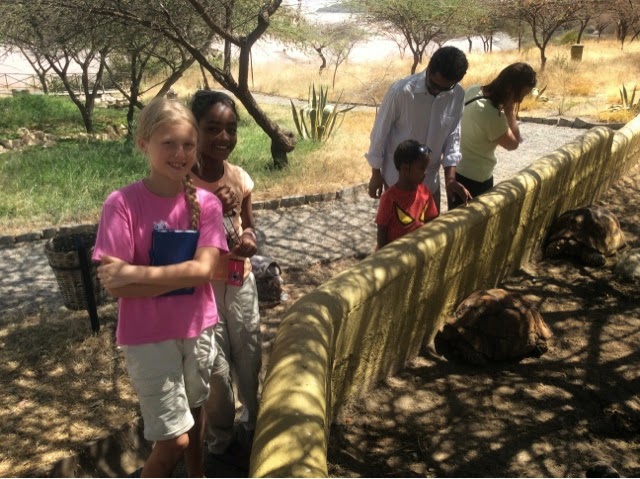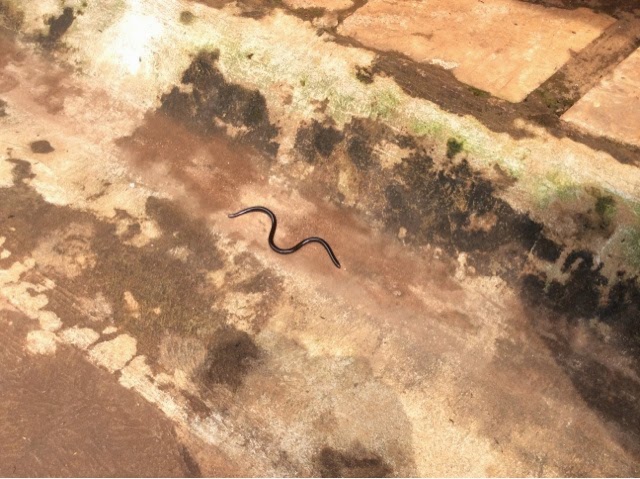As I have mentioned in a previous blog post, one of my roles here is as the hospital’s “Reanimationist”, the U.S. equivalent of an intensive care specialist. I am serving in this role in a hospital with no designated ICU, no ventilators, limited tests available, and limited medication options. As you can imagine, when a truly critically ill patient comes to Kibuye, there is often little we can do for them. In fact, my Reanimation team (myself and 6 medical students each month) has lost so many patients, that some of the missionaries have re-named it the “Deanimation service”. I guess that would make me the Deanimationist. This past week saw a large number of critically ill patients, so I thought I would give you an snapshot of the past week. It is not easy for me to summarize all that happened this week. It was an emotionally difficult week, but I think the experiences that I have had give me a deeper understanding of the needs and the limitations of working at a hospital in rural Africa. And I hope that this understanding will help myself and others to continue to work to bring about change, so that perhaps, one day, with time and effort and by the grace of God, my Deanimation team will truly be a Reanimation team.
Monday - Monday morning, Jason asked for a Reanimation consult on a 10 year old boy who underwent surgery last week for chronic osteomyelitis. He went into surgery malnourished but otherwise healthy. However, over the weekend, he seemed to be declining and the surgery team did not know why. He also had a white blood cell count of 44,000. Leukemia? Lymphoma? There is no way to diagnose this and no chemotherapy even if you could diagnosis. He also seemed to be getting more and more edematous and had not urinated in 2 days. So, I asked my medical students, what SHOULD we do for him? We should get a Creatinine. But our lab’s Creatinine machine is broken. We should get some electrolytes. No ability to do that either. So I move on to the next question, what CAN we do? We can test for malaria. We did, it was negative. We can test for sickle cell disease. Also negative. We can do an abdominal ultrasound. I asked Carlan to do this. No signs of hydronephrosis, but he did have acute cholecystitis (inflammation of the gallbladder). Strange for a 10 year old to have this problem. What else can we do? Nothing. Over the course of the next 2 days, he became less and less responsive and Wednesday night he died. I have no idea why.
Tuesday - Rachel had a patient with a post-partum hemorrhage. We went to the OR, Rachel stopped the bleeding, we gave her as much IV fluids as we could, gave her another unit of blood (her 4th), and she seemed to be doing okay. That afternoon I ordered a CBC, and Wednesday morning I got the results. Hemoglobin of 1.4 (normal is above 13). She was awake and alert with a normal blood pressure. I suggested perhaps another unit of blood ..… or maybe 5 more units of blood. I heard she ended up getting 2 more units. By Friday she was smiling and asking if she could go home.
Wednesday - I was doing a spinal for one of Jason’s surgeries while our community health worker (who sometimes doubles as an anesthetist) was giving Ketamine next door for a C section. I walked next door the moment the baby was delivered. Despite a normal fetal heart rate before the C section, the baby came out not breathing, and with no pulse. The nurse and I did CPR for 20 minutes, but with no response. The child died.
Thursday - Thursday afternoon, Jason had a 6 year old boy with what looked like a bowel obstruction. We took him to the OR, Jason opened him up and found a perforated colon. He resected the bowel, and all seemed to be going well, until about halfway through the case, the blood pressure started to go down. I gave fluid, no response. I gave Ephedrine, no response. His blood pressure was 40/20. I gave epinphrine. That helped, but was short lived. I injected an ampule of epinephrine into his bag of normal saline. That helped, but I have never given an infusion of epi through a peripheral IV and we have no ability to start a central line here. At the end of the case I extubated him and brough him to our recovery room. We have no recovery room nurses, and no ICU nurses, so I sat with him. I checked his blood pressure every 10 minutes and watched his pulse oximeter. I made sure he continued to get fluid and his next round of antibiotics, assuming he was septic. At 1:30 AM, I convinced myself that my being there was not going to change his course, so I went to bed. At 3:30 AM, he died. I wish I had not gone to bed.
Friday - Another reanimation consult, a 7 year old girl with stiff neck, headache and “ascending paralysis”. Guillan-Barre? Transverse Myelitis? We have no plasmapheresis in Burundi and no IgG. She was crying and in pain. I asked the student what she was receiving for pain. He said nothing. I ordered Tylenol.
Looking back over this week, a week with so many losses, it feels like the only good thing I succeded in was giving Tylenol to a dying girl in pain. Maybe that is all I could do. Maybe that is enough. I wish I could do more.






























